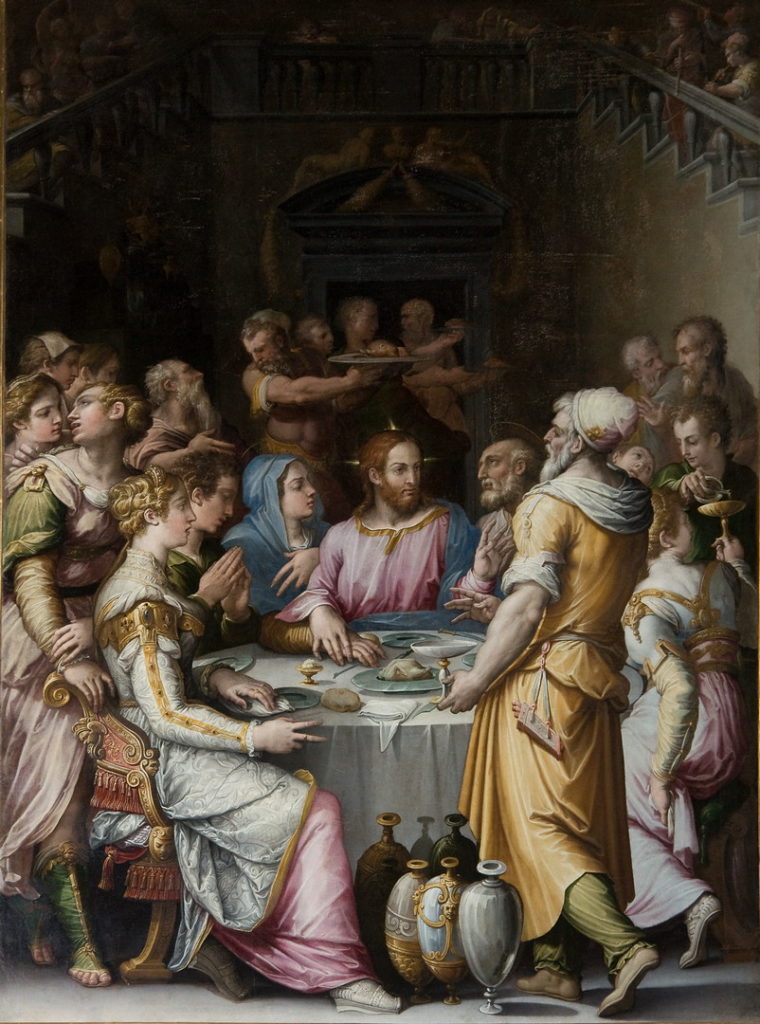Tu sei qui
WEDDING FEAST AT CANA
There are three paintings in the Chapel of the Blessed Sacrament by Giorgio Vasari, the painter, architect and historian from Arezzo. A careful and precise expression of 16th century mannerism, brought to Perugia by one of the most faithful of Michelangelo’s followers, the canvasses are witness to Vasari’s mastery of painting, an art in which he had already acquired substantial practice in the palazzo della Cancelleria in Rome, the refectory of the Church of Sant’Anna dei Lombardi in Naples, and the Sala dei Cinquecento in Palazzo Vecchio in Florence. Vasari is remembered above all for his great historical work, The Lives of the Artists, a history of art told through the biographies of individual artists. The first edition from 1550 was expanded in 1568 after many trips Vasari took to various parts of Italy. Among these, his visit to Umbria in about 1566 was very important, as it was the year the canvasses for San Pietro that were put in place. The archives of San Pietro hold the complete documentation regarding the contracts, payments, and execution of the three canvasses commissioned by the abbot Giacomo Dei of San Pietro and put in place by the master himself at Easter 1566. The canvasses were intended for the refectory; this is clear from the subjects portrayed, which refer to the theme of table and food, such as the Gospel description of the Wedding Feast of Cana. The scene of the miracle is set in an interior delimited by a double ramp of stairs that lead to a balcony. In the center, the main characters stand around a circular table, each captured with a specific pose and expression. The artist’s attention to and care for details can be seen in the elegance of the women’s gowns in the foreground and his visual description of the objects in the scene. In 1763 the canvasses were moved from the refectory to the Chapel of the Blessed Sacrament.


